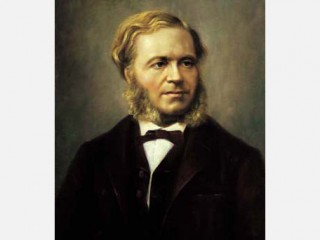
César Franck biography
Date of birth : 1822-12-10
Date of death : 1890-11-08
Birthplace : Liège, Belgium
Nationality : French
Category : Famous Figures
Last modified : 2011-02-08
Credited as : Music composer, pianist,
The music of the French composer César Franck is characterized by chromatic harmonies and skillful use of counterpoint. He frequently used a cyclic form, in which all the thematic material comes together in a climactic finale.
Born in Liège, Belgium, on Dec. 10, 1822, César Franck howed an unusual talent for music as a child. He began his studies at the Royal Conservatory, winning prizes for singing and piano playing. In 1835 his family moved to Paris. Franck attended the Paris Conservatory (1837-1842), where he won prizes for piano, counterpoint, fugue, and organ. He became known for the ease with which he improvised and performed difficult music at sight, transposing it to any key at will.
After a 2-year sojourn in Belgium, Franck settled permanently in Paris. He began composing and teaching. In 1858 he became organist at Ste-Clotilde, a post he held until his death. In 1872 he became professor of organ at the conservatory, where he attracted the devotion of some of the most promising students. Wielding a strong influence over younger composers like Vincent d'Indy, Ernest Chausson, and Henri Duparc, Franck seems to have turned his organ classes into composition courses and persuaded an entire generation of French composers to break away from opera (the only kind of music the French public seriously supported at this time) and to adopt a more serious attitude toward purely instrumental music. Franck died in Paris on Nov. 8, 1890.
Franck composed slowly and carefully, maturing through his lifetime. His total output is rather small, and his best works were written after his sixtieth birthday. The best-known of his choral compositions is The Beatitudes, completed in 1879, the same year he finished his Quintet for Piano and Strings, a characteristic work in the cyclic form. In 1884 he composed his most well-known piece for piano, the Prelude, Chorale, and Fugue, the title suggesting not only the religious tone that hovers over much of Franck's music but his own love of Johann Sebastian Bach.
The following year saw the appearance of Franck's Violin Sonata, with its effortlessly executed canon in the final movement, as well as the Symphonic Variations for piano and orchestra, a lyric quasi-concerto that treats piano and orchestra with equal consideration. The Symphony in D Minor, completed in 1888, follows the composer's preferred three-movement structure by combining the two traditional middle movements of the classical symphony, the andante and the scherzo, into a single movement. Again, all the principal themes return in the final movement.
















